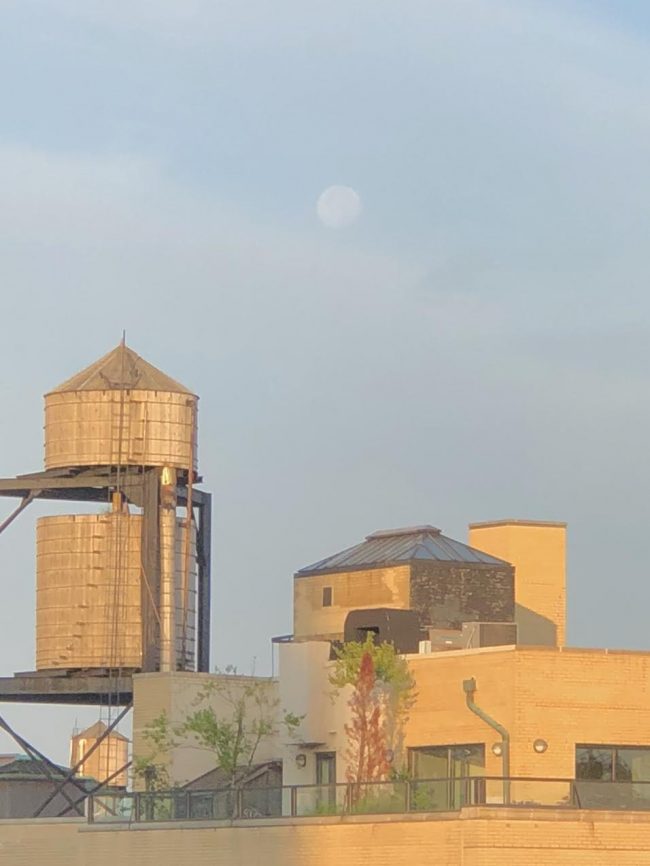
In the coming mornings, watch for a daytime moon. No matter where you are on Earth, look generally westward after sunrise to see the moon in a blue daytime sky, assuming yours is clear.
Why can you see the moon in the daytime now? The full moon – and partial lunar eclipse – happened during the night of Tuesday, July 16, 2019 (or the morning of Wednesday, July 17, for some). In the days after full moon, the moon is officially in a waning gibbous phase, rising after nightfall and setting in a westward direction shortly after sunrise.

July 29, 2018, daytime moon – caught from a rooftop in New York City – via our friend Ben Orlove.
If you look for the moon at the same time every morning, you’ll see this week’s waning moon appearing higher and higher in the western sky each early morning, for several days. To understand why, think about where the sun is in early morning. A full moon is opposite the sun, in the west when the sun is in the east. Except now it’s after full moon. The moon is moving in its orbit around Earth – moving toward the east, as it always does – drawing closer and closer to the Earth-sun line.
By July 25, 2019, the moon will be at the last quarter phase – rising around midnight and southward around dawn. Then the moon will turn new again on August 1. It’ll be rising and setting with the sun, giving us deliciously dark skies for the upcoming Delta Aquariid meteor shower, plus a waxing crescent moon in early August, when the annual Perseid meteor shower is rising to its peak.
People love to see the daytime moon. They wonder about it, and ask about it. Once, a reader in Kansas City wrote in with the name children’s moon to describe a moon visible during the day. She said this name stemmed from the idea that children can’t stay up at night late enough to see the moon when it appears only in darkness.
That story prompted another reader to send in an alternate version for the origin of the name children’s moon. She wrote:
I heard a daytime moon was called a ‘children’s moon’ because their eyes were sharp enough to pick it out, where the old folks, with fading vision, could not tell it from the clouds.
Can you see the daytime moon in the next few mornings?

Here’s another July daytime moon – from the year 2017 – from Jeff Hagan in Yakima, Washington. He wrote: “I woke up early and stepped onto the deck at our house in Yakima to check the weather. I was just in time to watch the full moon set over Mt. Adams, a 12,300-foot glaciated volcano in the Cascade Mountains. The moon appeared to be rolling down the north ridge of the mountain.”
Bottom line: In the days after every full moon, the moon appears in the west after sunrise, in a blue sky. Watch for it.
Four keys to understanding moon phases
Source:
https://earthsky.org/tonight/daytime-moon-this-upcoming-week